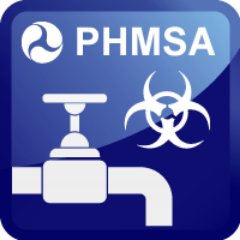
On December 21st, 2020, the Pipeline and Hazardous Materials Safety Administration (PHMSA) published a final rulemaking with numerous editorial corrections and clarifications to the Hazardous Materials Regulations (HMR). The intended effect of the final rule is to enhance accuracy and reduce misunderstandings of the hazardous materials regulations. This final rule does not introduce any new requirements and is effective on January 20th, 2021.
Use of the Term “Movement”
The most significant change PHMSA made to the HMR is the use of the term movement. Throughout the HMR, “movement” is used to describe a change in position or “shifting” of a package or its contents.
However, the hazardous materials regulations define “movement” as the physical transfer of hazardous material from one geographic location to another by rail car, aircraft, motor vehicle, or vessel. This definition makes the use of the term “movement” not appropriate when prescribing requirements for handling or stowage of packages.
PHMSA is replacing the term “movement” with “shifting” or “motion” as appropriate wherever the term is used concerning handling or stowage of packagings.
Other Changes to the Hazardous Materials Regulations
Numerous additional changes were made to the HMR including:
- Revising the definition of reportable quantity in § 171.8 to include a reference to Appendix A of § 172.101 and the appropriate columns in Tables 1 and 2;
- Numerous corrections to entries in the § 172.101 Hazardous Materials Table;
- Correcting metric conversion to US standard units throughout the regulations;
- Removing expired transition dates from § 172.446, §173.27, §173.121; and
- Updating the FAA contact information for reporting discrepancies in hazardous materials incidents in § 175.31.
Changes to Section 172.202
This section informs the requirements related to how the hazardous materials must be described in the shipping documents. Under this section, the sequence of shipping description, which began with the appropriate shipping name, could be used only until January 1st, 2013. Following the end of this authorization period, the PHMSA has removed this provision from the content because at present only the new sequence starting with the UN number is applicable.
Changes to Section 172.322
Marine pollutant marking requirements are provided under this section. In the introduction part of the text, each side’s length in the marking was converted wrongly as 4 inches. PHMSA has made a correction in the conversion calculation to make it correctly read 3.9 inches to ensure consistency of calculation throughout the hazmat material regulations (HMR). Similarly, PHMSA is correcting the unit reading as 9.8 inches in 172.322(e)(2)(ii).
Changes to Section 172.330
Marking requirements for multi-unit and other tank cars are provided under this section of the hazmat material regulations. On May 6th, 1997, RSPA has issued a final rule, which revised various HMT shipping names by removing or adding the words “inhibited,” “compressed,” “solution,” and “liquefied” to make them consistent with internationally used shipping names. It also removed “liquefied” word from “Ammonia, anhydrous” shipping name. But in this section, the word “liquefied” was still included along with “Ammonia, anhydrous.” To ensure consistency, PHMSA has revised the previous term “Ammonia, anhydrous liquefied” as “Ammonia, anhydrous.”
Changes to Section 172.400
Requirements for general labeling of shipping packages are provided under this section of the HMR. On January 23rd, 2008, the Health and Human Services Department of the US government removed 42 CFR part 72, in a published final rule. The interstate transportation of etiologic agents was governed by this part, and its removal was done because DOT had already in place more detailed regulations that applied to the commercial shipping of infectious materials, leading to discontinuation of the etiologic agent label. Following this, PHMSA has now removed the label name footnote “Infectious Substance,” which refers to the discontinued etiologic agent label.
Online Training Related to Hazmat Regulations
Hazmat University provides online hazmat training in compliance with Federal and International Regulations. You can have access to reliable and accurate online hazmat training in a user-friendly digital environment. To know more about the training courses of Hazmat University or talk to an experienced representative, give us a call at (844) 427-0167 or fill out this online contact form.
April’s Promotion!
For the first time ever, we are offering individuals who complete self-paced online training on Hazmat University during the month of April an opportunity to attend a supplemental Meet, Greet, and Q&A webinar with our Vice President and regulatory team member, Sonia Irusta.
Please note that these webinars are intended for those who will complete their online training during the month of April. We advise anyone who would like to participate to write down their questions while taking their online training and submit them to our team prior to the webinar: CustomerService@BureauDG.com
